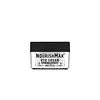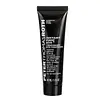What's inside
What's inside
 Key Ingredients
Key Ingredients

 Benefits
Benefits

 Concerns
Concerns

 Ingredients Side-by-side
Ingredients Side-by-side

Water
Skin ConditioningSimmondsia Chinensis Seed Oil
EmollientPolyacrylamide
C13-14 Isoparaffin
EmollientSqualane
EmollientCaffeine
Skin ConditioningCeramide NP
Skin ConditioningPeucedanum Graveolens Extract
TonicGlycine Soja Oil
EmollientPhytonadione Epoxide
AstringentPrunus Armeniaca Kernel Oil
MaskingSodium Hyaluronate
HumectantRetinol
Skin ConditioningArnica Montana Flower Extract
MaskingPalmitoyl Tetrapeptide-7
Skin ConditioningAcetyl Hexapeptide-8
HumectantSaccharomyces/Copper Ferment
Skin ConditioningSaccharomyces/Silicon Ferment
Skin ConditioningTocopherol
AntioxidantN-Hydroxysuccinimide
Skin ConditioningChrysin
Skin ConditioningPhenoxyethanol
PreservativeGlycerin
HumectantButylene Glycol
HumectantLaureth-7
EmulsifyingEthylhexylglycerin
Skin ConditioningCaprylic/Capric Triglyceride
MaskingPolysorbate 20
EmulsifyingCarbomer
Emulsion StabilisingCetyl Palmitate
EmollientLaureth-23
CleansingPotassium Sorbate
PreservativeTrideceth-6 Phosphate
EmulsifyingTriethanolamine
BufferingSteareth-20
CleansingCeramide 3
Skin ConditioningWater, Simmondsia Chinensis Seed Oil, Polyacrylamide, C13-14 Isoparaffin, Squalane, Caffeine, Ceramide NP, Peucedanum Graveolens Extract, Glycine Soja Oil, Phytonadione Epoxide, Prunus Armeniaca Kernel Oil, Sodium Hyaluronate, Retinol, Arnica Montana Flower Extract, Palmitoyl Tetrapeptide-7, Acetyl Hexapeptide-8, Saccharomyces/Copper Ferment, Saccharomyces/Silicon Ferment, Tocopherol, N-Hydroxysuccinimide, Chrysin, Phenoxyethanol, Glycerin, Butylene Glycol, Laureth-7, Ethylhexylglycerin, Caprylic/Capric Triglyceride, Polysorbate 20, Carbomer, Cetyl Palmitate, Laureth-23, Potassium Sorbate, Trideceth-6 Phosphate, Triethanolamine, Steareth-20, Ceramide 3
Water
Skin ConditioningGlycerin
HumectantButylene Glycol
HumectantSodium Silicate
BufferingMagnesium Aluminum Silicate
AbsorbentSodium Magnesium Fluorosilicate
AbrasivePalmitoyl Tetrapeptide-7
Skin ConditioningDipeptide-2
Skin ConditioningAscorbic Acid
AntioxidantTocopheryl Acetate
AntioxidantHesperidin Methyl Chalcone
AntioxidantRetinyl Palmitate
Skin ConditioningPanthenol
Skin ConditioningFoeniculum Vulgare Seed Extract
Skin ConditioningMedicago Sativa Seed Extract
Skin ConditioningCarrageenan
Argania Spinosa Kernel Extract
Skin ConditioningPEG-8 Dimethicone
EmulsifyingSilica
AbrasiveOctyldodecanol
EmollientSymphytum Officinale Leaf Extract
Skin ConditioningSodium Propoxyhydroxypropyl Thiosulfate Silica
BHT
AntioxidantDisodium EDTA
Hydrolyzed Lupine Protein
Skin ConditioningSteareth-20
CleansingSodium Cocoyl Glutamate
CleansingCarbomer
Emulsion StabilisingChlorhexidine Digluconate
AntimicrobialEthylhexylglycerin
Skin ConditioningPotassium Sorbate
PreservativeCitric Acid
BufferingSodium Citrate
BufferingSodium Benzoate
MaskingPhenoxyethanol
PreservativeWater, Glycerin, Butylene Glycol, Sodium Silicate, Magnesium Aluminum Silicate, Sodium Magnesium Fluorosilicate, Palmitoyl Tetrapeptide-7, Dipeptide-2, Ascorbic Acid, Tocopheryl Acetate, Hesperidin Methyl Chalcone, Retinyl Palmitate, Panthenol, Foeniculum Vulgare Seed Extract, Medicago Sativa Seed Extract, Carrageenan, Argania Spinosa Kernel Extract, PEG-8 Dimethicone, Silica, Octyldodecanol, Symphytum Officinale Leaf Extract, Sodium Propoxyhydroxypropyl Thiosulfate Silica, BHT, Disodium EDTA, Hydrolyzed Lupine Protein, Steareth-20, Sodium Cocoyl Glutamate, Carbomer, Chlorhexidine Digluconate, Ethylhexylglycerin, Potassium Sorbate, Citric Acid, Sodium Citrate, Sodium Benzoate, Phenoxyethanol
Ingredients Explained
These ingredients are found in both products.
Ingredients higher up in an ingredient list are typically present in a larger amount.
Butylene Glycol (or BG) is used within cosmetic products for a few different reasons:
Overall, Butylene Glycol is a safe and well-rounded ingredient that works well with other ingredients.
Though this ingredient works well with most skin types, some people with sensitive skin may experience a reaction such as allergic rashes, closed comedones, or itchiness.
Learn more about Butylene GlycolCarbomer is a polymer of acrylic acid. Its main role is to create a gel consistency.
A high amount of carbomer can cause pilling or balling up of products. Don't worry, most products contain 1% or less of carbomer.
Ethylhexylglycerin (we can't pronounce this either) is commonly used as a preservative and skin softener. It is derived from glyceryl.
You might see Ethylhexylglycerin often paired with other preservatives such as phenoxyethanol. Ethylhexylglycerin has been found to increase the effectiveness of these other preservatives.
Glycerin is already naturally found in your skin. It helps moisturize and protect your skin.
A study from 2016 found glycerin to be more effective as a humectant than AHAs and hyaluronic acid.
As a humectant, it helps the skin stay hydrated by pulling moisture to your skin. The low molecular weight of glycerin allows it to pull moisture into the deeper layers of your skin.
Hydrated skin improves your skin barrier; Your skin barrier helps protect against irritants and bacteria.
Glycerin has also been found to have antimicrobial and antiviral properties. Due to these properties, glycerin is often used in wound and burn treatments.
In cosmetics, glycerin is usually derived from plants such as soybean or palm. However, it can also be sourced from animals, such as tallow or animal fat.
This ingredient is organic, colorless, odorless, and non-toxic.
Glycerin is the name for this ingredient in American English. British English uses Glycerol/Glycerine.
Learn more about GlycerinPalmitoyl Tetrapeptide-7 (formerly Palmitoyl Tetrapeptide-3) is a lab-made peptide with anti-inflammatory and skin-repairing benefits. It's made up of four amino acids (glycine, glutamine, proline, and arginine) and palmitic acid (which helps it penetrate skin more effectively).
This ingredient helps reduce inflammation by limiting the production of interleukin-6 (IL-6), a chemical that triggers inflammatory responses, particularly after UV exposure.
Less inflammation = slower collagen breakdown and a longer-lasting, youthful appearance.
Palmitoyl Tetrapeptide-7 also stimulates collagen production and supports a healthier skin barrier.
Over time, this can improve skin firmness, hydration, and reduce the appearance of fine lines. It’s commonly paired with Palmitoyl Tripeptide-1 in the well-known Matrixyl 3000 complex for enhanced anti-aging effects.
This ingredient has been shown to be effective and safe in cosmetic use and you'll typically find it in small amounts (less than 0.01%).
Due to its palmitic acid base, it may not be safe for Malassezia folliculitis.
Read more about other common types of peptides here:
Learn more about Palmitoyl Tetrapeptide-7Phenoxyethanol is a preservative that has germicide, antimicrobial, and aromatic properties. Studies show that phenoxyethanol can prevent microbial growth. By itself, it has a scent that is similar to that of a rose.
It's often used in formulations along with Caprylyl Glycol to preserve the shelf life of products.
Potassium Sorbate is a preservative used to prevent yeast and mold in products. It is commonly found in both cosmetic and food products.
This ingredient comes from potassium salt derived from sorbic acid. Sorbic acid is a natural antibiotic and effective against fungus.
Both potassium sorbate and sorbic acid can be found in baked goods, cheeses, dried meats, dried fruit, ice cream, pickles, wine, yogurt, and more.
You'll often find this ingredient used with other preservatives.
Learn more about Potassium SorbateSteareth-20 is a waxy compound used to emulsify ingredients. It is created from stearyl alcohol.
It possesses surfactant properties. This means it reduces surface tension and helps oils, dirt, and pollutants to be washed away.
The 20 stands for the number of ethylene oxide used to create this ingredient.
Learn more about Steareth-20Water. It's the most common cosmetic ingredient of all. You'll usually see it at the top of ingredient lists, meaning that it makes up the largest part of the product.
So why is it so popular? Water most often acts as a solvent - this means that it helps dissolve other ingredients into the formulation.
You'll also recognize water as that liquid we all need to stay alive. If you see this, drink a glass of water. Stay hydrated!
Learn more about Water